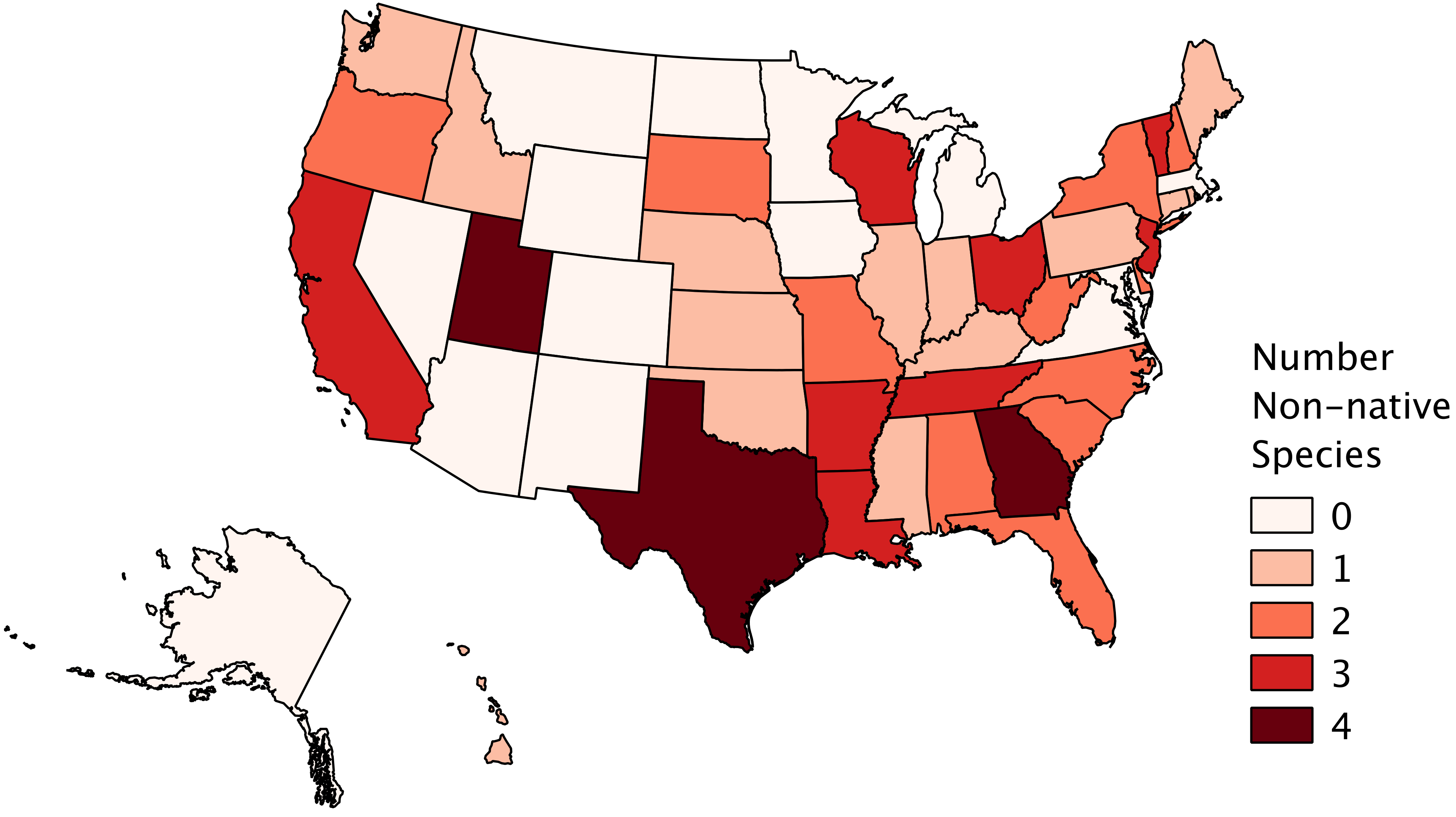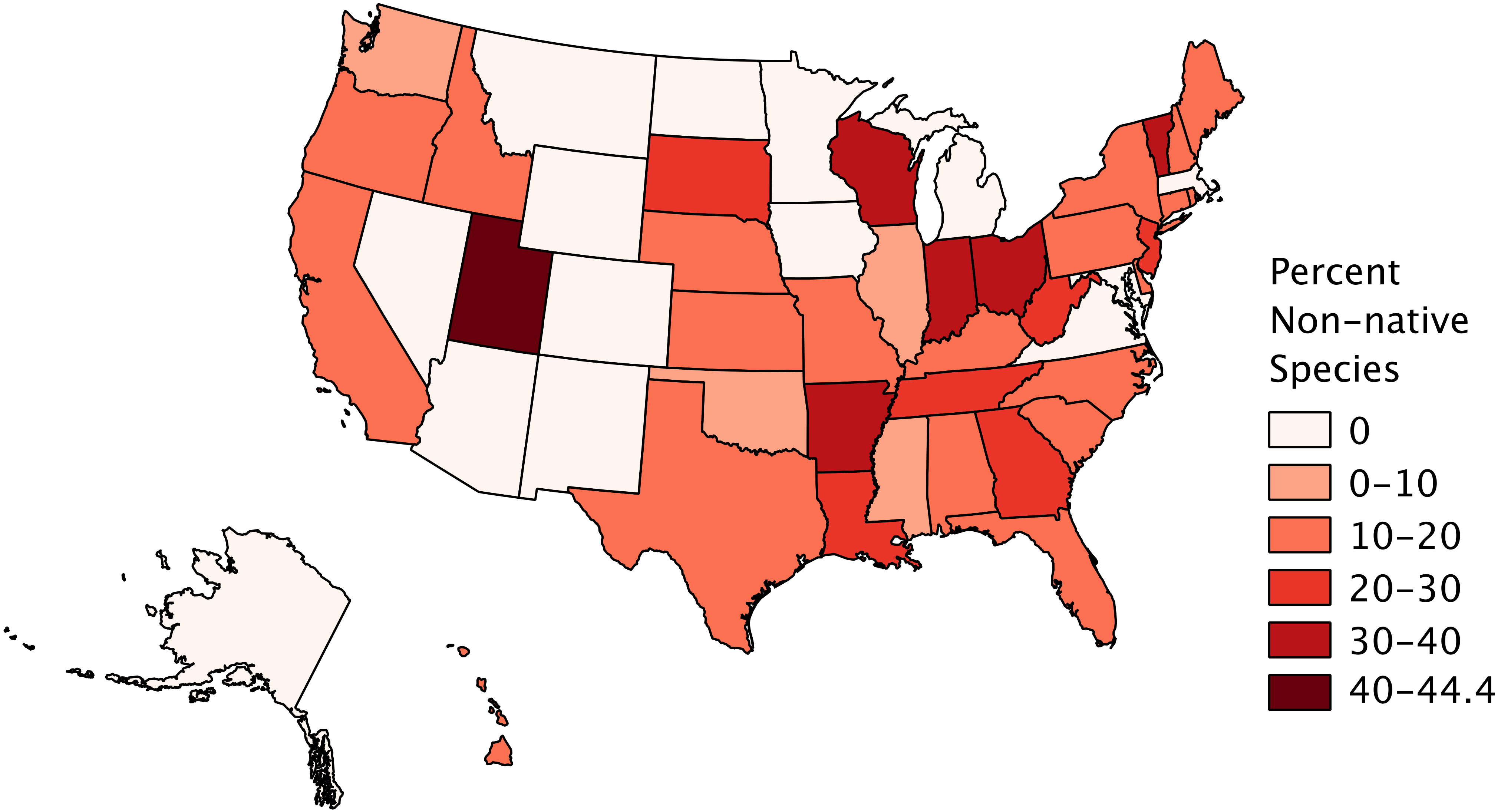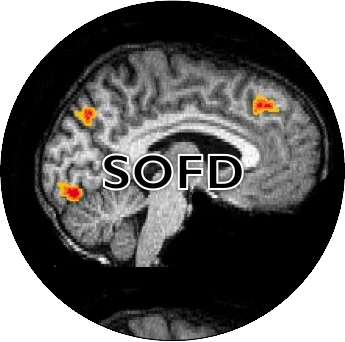
Tweet
January 22, 2016
Proceedings of the Natural Institute of Science | Volume 3 | MAPSS 1
Map showing the number of US State symbols and icons that are actually non-native species
Every US state has at least some officially designated symbols and icons (like, State Bird or State Flower) that are said to best represent its cultural heritage. We looked at each state's list of State Symbols to determine which ones are actually classified as non-native species (meaning a species that was introduced to the US by human activity).
We used Wikipedia and the website of State Symbols USA organization to find each state's official symbols. To determine if a species was native or not, we used our good old fashioned knowledge of the species (just kidding, we used Wikipedia for that, too.)
First, here is a map showing the number of official symbols that are non-native for each State:

Three states had four official symbols that were non-native:
Georgia (State Flower - Cherokee Rose; State Insect - Western Honey Bee; State Fruit - Peach; State Crop - Peanut)
Texas (State Fruit - Grapefruit; State Shrub - Crape Myrtle; State Large Mammal - Cattle; State Pepper - Jalapeno)
Utah (State Insect - Western Honey Bee; State Fruit - Cherry; State Vegetable - Spanish Sweet Onion; State Historical Vegetable - Sugar Beet)
Only 14 States (= 28%) were completely devoid of non-native species.
Not all states have the same number of official symbols. For example, Indiana and Iowa have designated only three species-centric symbols (State Flower, State Tree and State Bird), while Texas has designated the most (24 state symbols involving species). So, for each state, we calculated what percentage of state symbols involving species are actually non-native:

Utah takes the top spot; four of its nine symbols involving species were non-native. Indiana is second, followed by Wisconsin, Vermont, Arkansas, and Ohio.
Some other interesting stats:
Massachusetts and New Mexico have the highest number of species-centric state symbols without any of them being non-native (11).
Forty-two states have designated a State Insect. In 19 cases (about 45%), that insect is non-native, and almost always that non-native insect is the European Honeybee.
44% of the State Fruits are non-native, as well as 77% of the State Vegetables.
Every state has a State Tree. None of them are non-native. Yay!
Similarly, all State Amphibians, State Fish (Salt of Freshwater), State Butterflies, State Reptiles, State Shells, and State Grasses were native to the United States.
The State Beautification and Conservation Plant of Pennsylvania is Crownvetch (Coronilla varia) despite the fact it is non-native and is actually classified as an invasive species by some Midwestern states. Get it together, Pennsylvania.
More Articles Below!

Proceedings of the Natural Institute of Science (PNIS) by https://instsci.org/ is licensed under a Creative Commons Attribution-ShareAlike 4.0 International License.


